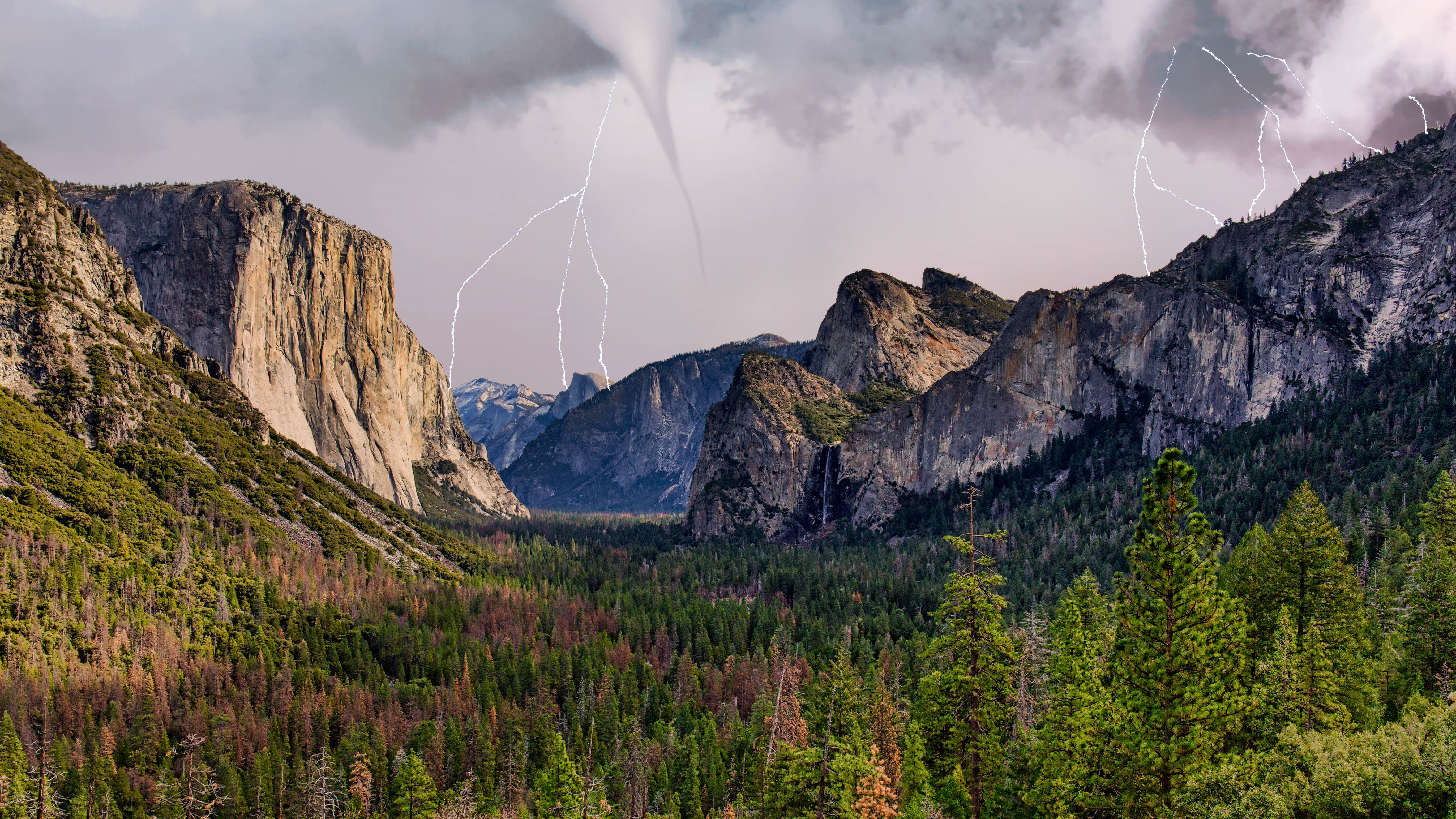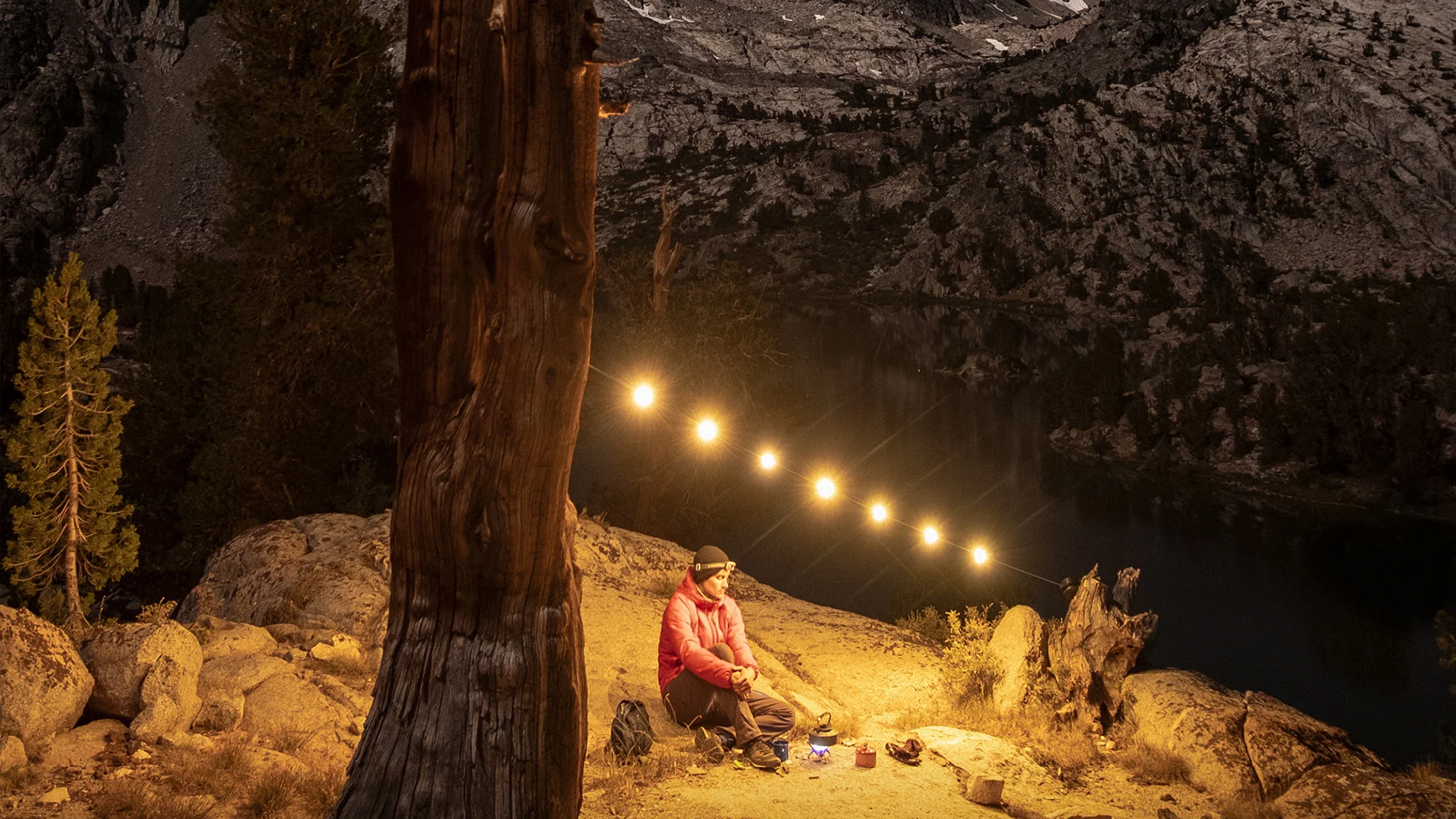
A pair of hikers were struck by lightning several times after taking shelter from a storm in a cave at the summit of Half Dome in Yosemite National Park. Lightning tends to travel down vertical surfaces like cliff faces and can easily arc to the ground if it meets a cave entrance, making them particularly dangerous places to be during a storm.
In an interview with the San Francisco Chronicle, Jordan Dean explained that disaster struck after he set out to conquer Half Dome with a group of friends last week. They reached the top without incident, but as they prepared to make their descent, mist started to roll in and things began to go south.
The summit of Half Dome is accessible via a pair of cables, which allow hikers to make the final steep ascent without full climbing equipment. As the weather started to turn and rain set in the cables became congested with visitors making their way down, so Dean and a friend, Josh Van Dyke, decided to stay at the top.
The National Park Service (NPS) warns that the cables and rock become very slick when wet, and most accidents happen when it's raining. As the crowds descended, one woman fell onto a rock ledge and required rescue, while one of Dean's friends slipped and cut his knee.
"Everywhere all at once"
As it became apparent that a storm was moving over, Dean, Van Dyke and others took shelter in a rock cave. This was a mistake; as this safety article from Climbing.com explains, lightning tends to travel down vertical surfaces, and if you are in the mouth of a cave, it might use your body to bridge the gap so it can reach the ground. Standing under an overhang is a bad idea for the same reason.
Descend as far and fast as you can before taking shelter
National Park Service
That's what happened to Dean, who felt lightning strike his knee and compared it to being punched in the leg. Another person in the cave was struck on the back of the head.
"The second time it struck was worse. It was way worse," said Dean. "We saw the flashes, it was just like everywhere all at once." Van Dyke was struck a second time and left dazed, while another man in the cave passed out for a few minutes. Eventually the storm passed and the group made their way back down, shaken and singed, but otherwise unharmed.
Advnture Newsletter
All the latest inspiration, tips and guides to help you plan your next Advnture!
The NPS warns visitors that there is no safe place to shelter outside during a thunderstorm, and to check the weather forecast before heading out on a hike.
"Even if a thunderstorm is approaching from a far away, descend as far and fast as you can before taking shelter," it says. "Count the seconds between the flash of the lightning and the sound of the thunder; divide the number of seconds by five to get a very rough estimate of the distance (in miles) that the lightning storm is away from you."
- The best hiking boots: tested for grip and comfort on tough trails

Cat is the editor of Advnture, She’s been a journalist for 15 years, and was fitness and wellbeing editor on TechRadar before joining the Advnture team in 2022. She’s a UK Athletics qualified run leader, and in her spare time enjoys nothing more than lacing up her shoes and hitting the roads and trails (the muddier, the better), usually wearing at least two sports watches.
